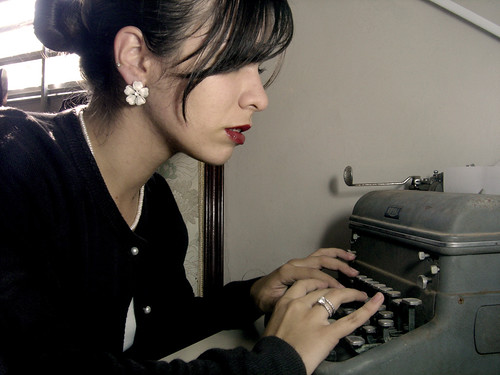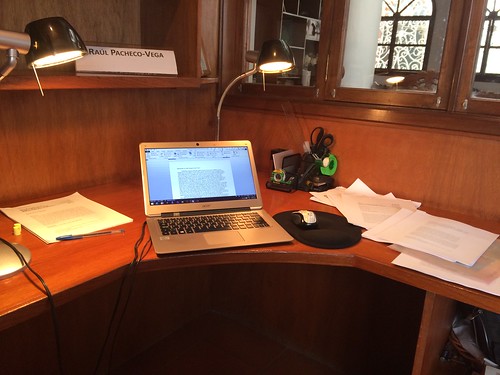I did a poll on what the topic of my next blog post should be, and by and large, job market advice has been the most sought after. I’ve been on both sides of the search committee table: I’ve applied to lots of academic jobs, and I’ve participated in and chaired search committees. Thus, I have some experience dealing with application documents. I don’t want to repeat what other people have written about, though (look at how many blog posts already exist on the issue of mistakes that are often made when writing and preparing academic job applications).
Earlier this year I sat on a job market panel at the Midwest Political Science Association (MPSA) and offered some advice, which I noted here in bullet points. The mistakes I note here are errors I have actually found in real applications, so none of these are made up. BUT, more importantly, SEEK OTHER ADVICE. Don’t take my suggestions here as gospel of truth. Your mileage may vary.
1. Address the cover letter to the right person.
To be on the safe side, address it to the search committee chair. Make sure NOT to address it to the departmental secretary!
2. Demonstrate that you have done your research on the department and each of the department’s faculty members
Don’t make it clear that you didn’t even look at what other faculty do and which courses and programmes they teach.
a. Do you know which courses you would be able to teach?
b. How does your current training help the department and their teaching needs?
c. Can your teaching be quite versatile and are you able to adapt to departmental needs?
3. The RIGHT FIT discussion is always very important. How do YOU fit in a department?
Don’t insist on being the best thing since chocolate cake in a department where your expertise would probably be already well represented.
a. Make sure the fit flows (e.g. do NOT make the assumption they should be loving you because you are you, but DO sell yourselves as your work IS in fact valuable)
b. Fit relates to current and potential (future) needs. Maybe they’ll need an experimentalist or an ethnographer in the near future?
c. How can you expand the skills set, or the knowledge area (or areas) in a specific department?
4. The content of the cover letter – don’t re-summarize your doctoral dissertation, but do offer some insight into how your project fits with the overall department
Don’t republish and summarize the entire CV in the application letters. One page or page and a half should be enough.
a. Make sure that your letter is short. Long letters take more time to be read.
b. Do NOT undersell yourselves. You may have adjuncted or be a sessional or contingent faculty, but that does not make you any less of a PhD or any less valuable. Do NOT put yourself down for being a contingent faculty member. You are still faculty.
5. Which additional skills do you bring to the department and to the institution?
Don’t apply to a department where your methodological and research expertise would probably already be very well represented. Look for areas where you can contribute. Make clear connections between your expertise and that of the others, and show complementarity with other faculty members and their research.
a. Languages (beyond English and the mother tongue of the country where you are applying)
b. Computer training
c. Spatial analysis (GIS)
d. Social network analysis
e. Writing
f. Coaching
g. Networking skills
h. Multiple research methods – and how you are not just following the same method and model as others do (please don’t always do field experiments)
6. Don’t assume anything about money, or salary.
Don’t talk money from the get-go.
a. Do talk about your willingness to travel and/or relocate
b. Salary conversations are usually reserved for AFTER a campus interview and a job offer. That’s where negotiation begins.
c. Be honest from the start. Don’t tell the department you’ll take the job and then leave them hanging or drop them swiftly.
7. Teaching statements are more than philosophical love letters.
Don’t offer grandiose statements about how much you love to teach and then show you don’t know which courses and degrees this institution offers.
a. Make sure you KNOW which courses are being taught at all levels
b. If it’s a multi-campus institution, know what you’d be expected to teach and where you’re expected and able to teach these courses. Think about logistics beforehand.
c. Examine syllabi of courses offered at the institution you are targeting, and offer examples of your own syllabi, quotations from former students’ evaluations, positive and negative.
8. Research statements need to be brief but also show your potential as an independent researcher.
Don’t rely solely on your dissertation work and show how you can do work beyond, and how well you’ve thought about it already.
a. How does your research go beyond your doctoral dissertation?
b. Do you have a clear pathway and know exactly what your next steps will be?
c. Where do you see yourself in X years?
d. Which journals you are planning to publish within?
A couple of additional points:
- Make sure someone else reads your documents and gives you feedback.
- Look for mentors and ask how you could get your CV and research statement and teaching statements to be stronger.
- Attend career-focused workshops and panels at your discipline’s major conferences. ASK QUESTIONS.
- Remember: the academic job market is atrocious. Don’t despair, and be prepared to move laterally to non-academic jobs if you need to.
A few additional blog posts I’ve read on the topic are linked in here, here, here and here.
If you liked this blog post, you may also be interested in my Resources for Graduate Students page, and on my reading notes of books I’ve read on how to do a doctoral degree.




















Recent Comments